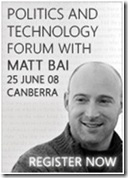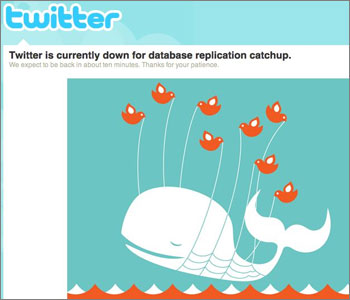The other day I “ran into” journalist Samela Harris online. She’s now a senior writer for Murdochland in Adelaide. Not long later, the following appeared at Adelaide Now.
Stilgherrian once was cherished name in South Australia –- until he the Gawler-born boy drifted east to make further fame and fortune. The former radio personality has maintained a status of significant stir both in the modern alternative media and the constantly evolving world of geekdom. One may catch up with his movements on his blog.
Gosh.
“Sa”, as she’s affectionately known, is daughter of the famous (infamous?) Australian man of letters, Max Harris — who once snuck up behind me and, with a swift underhand stroke of his silver-tipped cane, caught me fair on the balls. Ouch.


